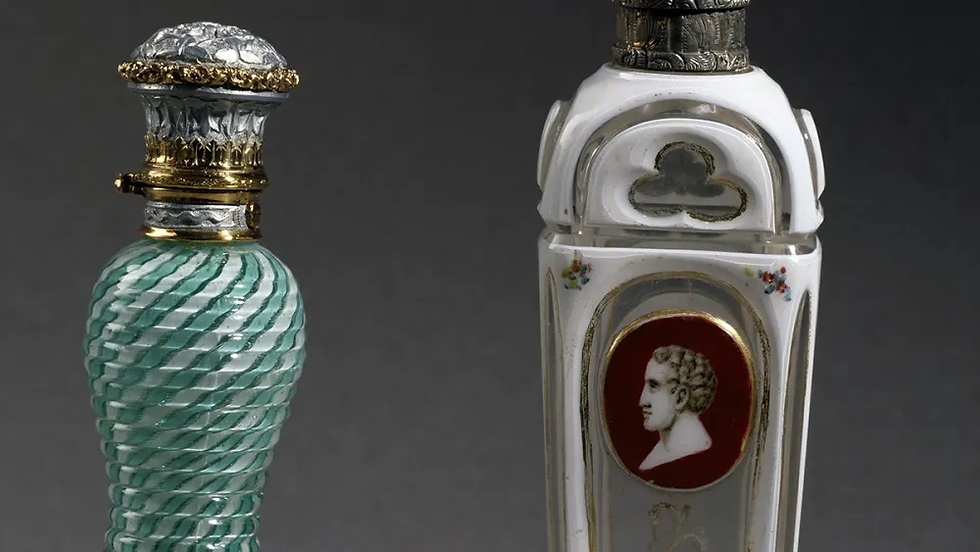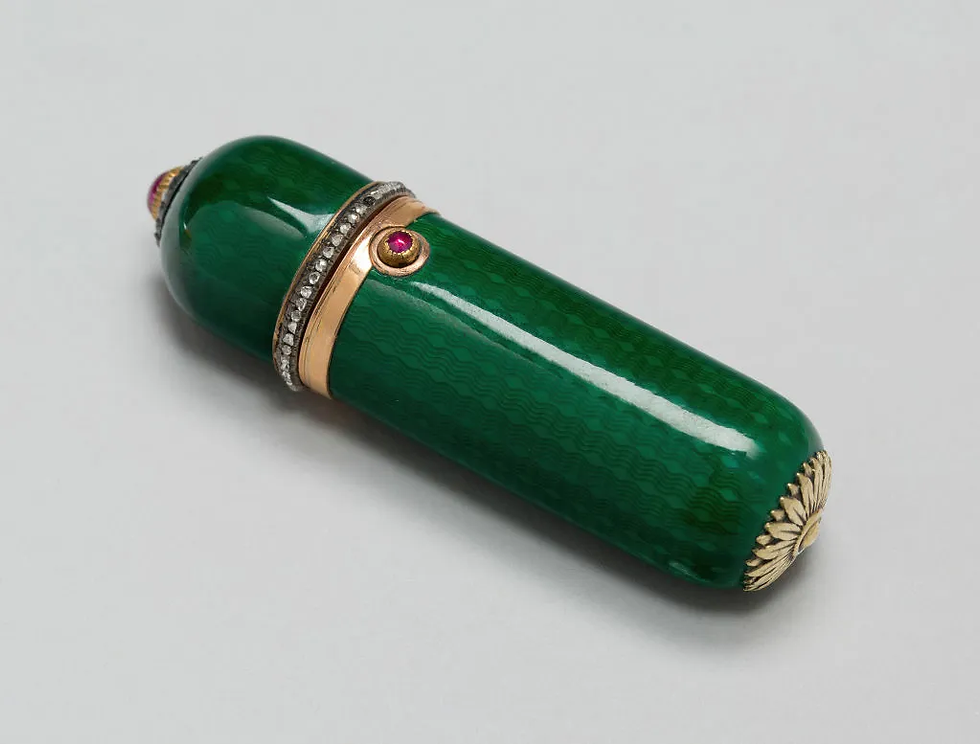Perfume bottles have been more than just containers—they tell a rich history of art, culture, and craftsmanship. Let’s take a journey through their evolution!

Ever stop to admire a perfume bottle and think, Wow, that’s a work of art!? Well, you’re not alone. Perfume bottles have been miniature masterpieces for centuries, holding not just beautiful fragrances but also rich histories.
Today, WWD recognize bottles like Chanel No. 5’s sleek glass square or the dazzling White Diamonds bottle by Elizabeth Taylor. But perfume bottles existed long before department stores and online shopping—some dating back thousands of years! From ancient Greece and China to 17th-century Europe and beyond, these little vessels have taken on fascinating shapes and styles.
So, let’s take a trip through the history of perfume bottles and explore how perfume bottles evolved from simple clay pots to the luxurious designs we see today.
Ancient Beginnings: Perfume Bottles in Early Civilizations

Perfume has always been a prized possession, and ancient civilizations knew it. In places like Egypt, Mesopotamia, and Greece, perfume was a symbol of status, spirituality, and self-care.
Ancient Egypt (c. 3,000 BC): Egyptians stored their precious scented oils in alabaster and glass bottles. Some were even shaped like gods or animals, showing how sacred perfume was to them.
Ancient Greece (c. 6th–4th century BC): The Greeks used ceramic flasks called aryballos or alabastron to hold oils and perfumes. These were often decorated with detailed paintings of warriors, mythological scenes, or everyday life.
Ancient China (Qing Dynasty, 18th century): The Chinese crafted jade perfume holders, beautifully carved with nature-inspired designs. These were often used to store incense or scented powders, reflecting their appreciation for delicate fragrances.

The Renaissance & Baroque Era: Perfume Bottles Become Ornate

By the 17th and 18th centuries, perfume bottles weren’t just practical—they were luxury items. Perfume was a huge part of European aristocratic culture, and bottles became status symbols.
1750s France: Some perfume bottles were shaped like miniature books, making them easy to carry discreetly.
1775 Germany: The Ludwigsburg Porcelain Factory created intricately designed scent bottles, such as a Huntsman-shaped bottle, showing off detailed craftsmanship.
18th-century China: Jade perfume flasks continued to be popular, often featuring carvings of sages and nature.


The 19th Century: A Golden Age for Perfume Bottles

If you love vintage perfume bottles, the 19th century is where things get really exciting. Perfume became more widely available, and bottle designs reflected different artistic movements.
Mid-1800s France: Baccarat and Clichy glassmakers created ornate, filigree milk glass bottles, some with delicate gold accents.
Bohemian Glass (Late 1800s): These perfume bottles featured stunning crystal cuts and elaborate designs, making them perfect for the elegant dressing tables of the time.
Fabergé Mini Bottles (Late 1800s, Russia): The famous Fabergé Workshop created tiny, jewel-encrusted perfume bottles that were practically miniature Fabergé eggs.


The 20th Century: Perfume Bottles as Modern Art

By the 1900s, perfume bottles became even more iconic, blending luxury, fashion, and design.
1921 – The Birth of Chanel No. 5: Coco Chanel revolutionized perfume with Chanel No. 5, packaged in a simple, yet elegant glass bottle.
1950s–1980s – Hollywood Glamour: Perfume bottles started reflecting celebrity culture, like the elegant, jewel-inspired design of Elizabeth Taylor’s White Diamonds.
Modern Day – Designer Creations: Today, perfume bottles are crafted by renowned designers and artists, often resembling sculptures or collectible pieces.

Final Thoughts: Perfume Bottles as Timeless Treasures
From ancient pottery to exquisite glass masterpieces, perfume bottles have always been more than just containers. They tell stories of art, culture, and luxury across the ages.
So next time you pick up a bottle of your favorite fragrance, take a moment to admire the design—because you’re holding a piece of history in your hands!
What’s your favorite perfume bottle of all time? Let’s chat in the comments!
.png)
Commentaires